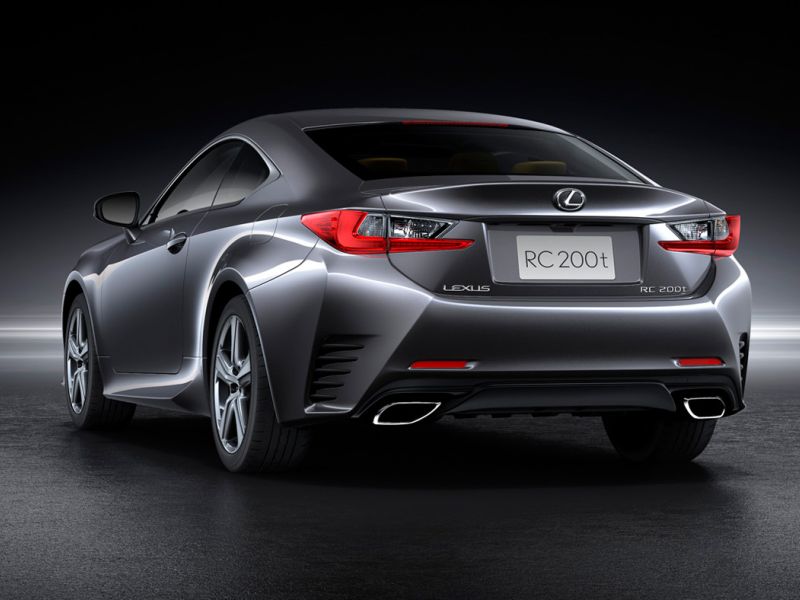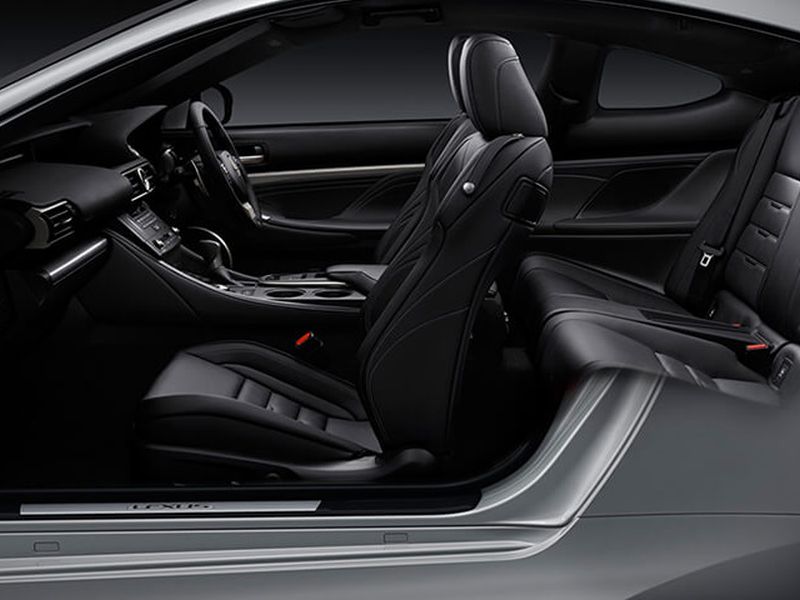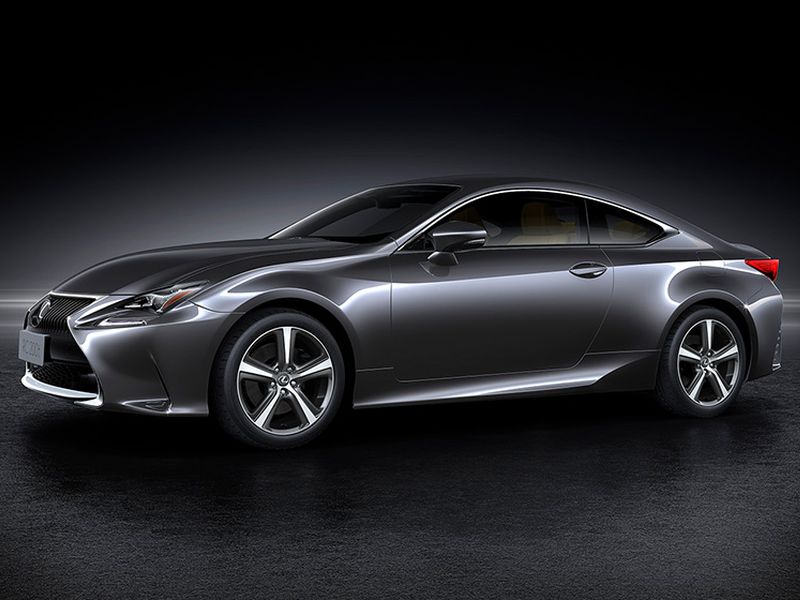Lexus RC Turbo: Following The Trend
Lexus RC Turbo is the latest version of the Japanese compact premium coupe which is some kind of a replacement for the previous entry model RC350. Lexus is following worldwide trends by putting the 2.0L turbo petrol engine into the car. Purists and traditionalists would scream “why?”, others will say let’s try it. About seventy horses are missing under RC Turbo’s bonnet compared to the 3.5L V6 engine of the RC350. Because of such a difference, RC Turbo could be considered as a completely new car and there is no need of comparison with the older RC brother.
AT A GLANCE
Upsides:
- Beautiful design
- Luxurious equipment
- Reasonable fuel economy
Downsides:
- Don’t expect too much sportiness
Design (5/5)

The design of the Lexus RC has the pure form of the coupe. The RC was in fact 2+2 coupe but the rear seats are almost unusable. One of the reasons for that is the aerodynamical low profile. Designers wanted sweeping lines and eye-catching looks, so utility wasn’t among the priorities. From every angle, the 4,695mm long RC offers visual pleasure. It features short wheelbase and large diameter wheels but the main thing is the Lexus signature spindle grille, which is the focal point of the brand’s design.
Engine, drivetrain, and performance (4/5)

As we said, the RC Turbo is using the 2.0L 4-cylinder turbo petrol engine which produces 241 hp and 350 Nm of torque. For the sprint from zero to 100 km/h, RC Turbo needs 7.5 seconds, which is half a second slower than the Lexus IS Turbo with the same engine. The reason lays in a bigger mass of the RC Turbo. The engine is connected to the 8-speed automatic transmission, which transfers all the power and torque to the rear wheels. Top speed of 230 km/h wouldn’t satisfy everybody. On the other hand, the fuel consumption is between 7.3 and 10 liters, which are reasonable numbers for such a type of a car.
Trim levels (4/5)

The standard equipment of the RC Turbo consists of SMART Keyless Go system, LED daytime running lights and LED headlights, rear LED lamps, LED front fog lamps, sporty 18-inch aluminium wheels, leather upholstery, ventilated seats, user-friendly 7.0-inch infotainment system, dual-zone climate control, subtle ambient lighting, reverse camera, illuminated handles, 60/40 folding rear seats and much more. With the centrally positioned selector, the driver can choose three driving modes: Eco, Normal and Sport. The car is available in six colors.
Safety (5/5)

The safety equipment started with 309 mm brake discs which handle the most demanding requirements with ease. All electronic aids are the part of the Vehicle Dynamic Integrated Management (EPS+VSC+ABS+TCS). Eight airbags provide maximum safety for all occupants. RC Turbo thinks about pedestrian safety too, which is why it features impact-absorbing pop-up hood. A sensor-activated safety system creates a space between the hood and the engine if an impact is detected.
Conclusion: 4.5/5.0
Adopting the 2.0L turbo engine to the RC lineup was a good idea. Such a car is not just Lexus’ answer to the world’s turbo trends but it also approaches a wider base of customers because it’s a more affordable entry-level model than the RC 350. Maximum safety and luxurious equipment will satisfy almost everybody, although some things are missing, like navigation for example. On the other hand, if somebody expects super sportiness from the RC Turbo, he will be disappointed. For such demands, there is the RC F. The RC Turbo is just a sports coupe, not a supersport car.




